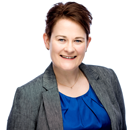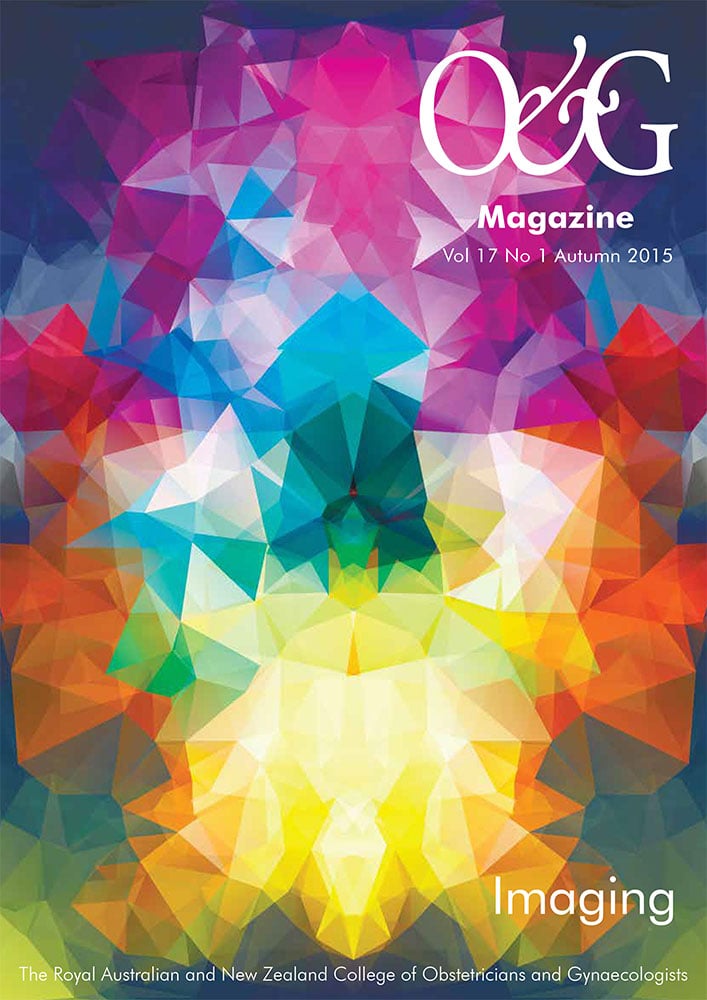South Australia
Partnership with Indonesia
South Australia has a well-deserved reputation for excellent biomedical research, but what may not be so well recognised is the enormous effort put into outreach of our expertise. We are working to improve the health and wellbeing of pregnant women and their children in Indonesia through a collaborative partnership. For the past four years, a team of doctors, nurses and midwives have travelled to Bali each May, to share their skills and knowledge with colleagues from Sanglah Hospital, Bali’s main public hospital. They take part in Annual Combined Clinical Meetings, held over several days, through which information is shared with local doctors, trainees and midwives. This is an opportunity for local staff to gain a better understanding of how to manage high-risk pregnancies.
The initiative has developed over several years, led by a team that includes A/Prof John Svigos AM and Dr Rosalie Grivell. Women in Indonesia have much higher rates of maternal and perinatal mortality than Australia and we are looking at what we can do to change some of the outcomes in a resource-poor setting. Part of this is education about the need to be more discerning about different styles of antenatal care and to identify and manage high-risk conditions, such as pre-eclampsia and intrauterine growth restriction. The relationship is mutually beneficial as the Indonesian team treat serious conditions, such as perinatal infection and advanced gynaecological cancer, which we do not commonly see in Australia.
The team also provides the hospital with equipment and, in 2011 and 2012, three Indonesian MFM Trainees undertook training rotations in Adelaide, using funding provided by AusAID. The most recent visit to Sanglah Hospital, in May 2014, was attended by 15 Women’s and Children’s Hospital staff, as well as colleagues from the Lyell McEwin hospital, King Edward Memorial Hospital (WA), Royal Prince Alfred Hospital (NSW) and Royal North Shore Hospital (NSW). Preparations are underway for the fifth meeting this year.
Dr James Harvey
Dr Rosalie Grivell
Tasmania
The changing landscape of training
Tasmania, an island of approximately 550 000 inhabitants, is well known for the varied geography, beautiful landscape and fabulous tourist attractions such as Cradle Mountain and Stanley in the northwest, the vineyards in Tamar Valley and Cataract Gorge in the north and MONA and Salamanca Markets in Hobart and Bruny Island in the south. Tourism and the fresh food are the major drawcards of the state. However, as far as training in our specialty is concerned, Tasmania is sometimes seen as the last outpost by many Trainees. This is clearly a myth that should be dispelled.
Core Training is provided at Royal Hobart Hospital (RHH), Launceston General Hospital (LGH) and the Northwest Regional Hospital (incorporating Burnie and the Mersey Community Hospitals). Advanced Training opportunities exist in Hobart and Launceston and in Burnie (as part of an elective year under the old scheme). The gynaecological oncologists at RHH have a Pelvic Floor Fellow (an extremely popular post) who is appointed for a year at a time. First-year Trainees start at both RHH and LGH. Trainees rotate to either LGH or Burnie Hospital as part of their rural rotation. Both LGH and Burnie are also used by other units in the mainland for the rural rotation of their Trainees. All three training centres have been assessed by the College and have training accreditation for four years.
While there are no subspecialist services apart from gynaecological oncology in Tasmania, the links between the three regions have provided good opportunities for Core Training in all the major specialty areas. RHH and LGH have always provided an excellent grounding for the more junior Trainees and both LGH and Burnie have provided more opportunities, especially in gynaecological operating for the more experienced Trainees.
These rural rotations are immensely popular. Trainees in RHH also get good exposure to the academic aspects of the discipline such as research, clinical audit and quality improvement. However, Advanced Training has been problematic until recently.
For many years, trainees in Tasmania have gone to centres in the mainland when they complete their core training. Some return to Tasmania after their FRANZCOG, but there is always a talent drain to the mainland. In recognition of this, in 2013, RHH was successful in bidding for Federal funding under the ‘Training More Specialist Doctors’ rescue package. With this funding, an advanced Trainee would spend year 5 in a large tertiary hospital in Melbourne and then rotate to Hobart in the final year as a senior registrar. The aim is for the senior registrar to gain significant clinical experience in a large Melbourne Hospital and return to Hobart in the final year as a transition to being a specialist. The first trainee has completed her first year under this scheme in Melbourne and joined the unit in Hobart in February 2015.
The year 2015 will see significant changes in the health system in Tasmania. The new state Government has started the Health Reforms called ‘One State, One Health System, Better Outcomes’ that will see one health system in Tasmania from July 2015, rather than the current three health systems. There is currently a consultation period with the publication of the Green Paper where the Role Delineation paper sets out the proposed functions of each hospital for consultation. While the restructure of the health system is unlikely to affect training, the budgetary control is likely to have an impact as the Government has set strict surgical targets for each hospital. Inevitably, with the limited funding for waiting lists, gynaecological surgery will always be seen to be at a lower priority compared to other specialties. This could have an impact on the opportunities for gynaecological surgery not only at RHH, but also in the state.
In recognition of this, the Tasmanian Training and Accreditation Committee has embarked on a review of training in Tasmania. There are opportunities to capitalise on the strengths of each unit in terms of their training provision. Links with mainland hospitals should also be strengthened and formalised, not only to use Tasmania as rural rotation, but also the major metropolitan hospitals for the Advanced Trainees to consolidate their experience before they complete their FRANZCOG training. Exciting changes are on the horizon in the ‘last outpost’.
A/Prof Boon Lim
Victoria
Eventful times
Marvellous Melbourne is magical in March. Highlights include Moomba, Motor Racing, Melbourne’s Food and Wine Festival and our Fashion Week, but what makes it even more impressive is the Australasian Gynaecological Endoscopy & Surgery Society (AGES) and (International Society for Gynecologic Endoscopy) ISGE Annual Congress which meets on the 4th through to the 7th of March.
AGES is now in its 25th year and, along with the ISGE, they are putting on a jam-packed program focusing on controversies and challenges in minimal invasive gynaecological surgery. This program is essential for both Trainees and Fellows who have a keen interest in laparoscopic surgery. With recent media attention on laparoscopic myomectomy the question will be asked ‘Is laparoscopic myomectomy dead?’ Understanding the concerns about morecellation is paramount in providing our patients with the information required for informed consent. The President of AGES, Dr Jim Tsaltas, will explain the RANZCOG/AGES guidelines on morcellation.
International guests always flock to Melbourne’s major events – and this conference doesn’t fail in this regard. Dr Ornella Sizzi, from Italy, will outline the role of adenomyosis in infertility, Dr Daniel Kruschinski, from Germany, will speak on adhesion prevention at laparoscopy and Dr Howard Salvay, from the USA, will discuss single port surgery – its benefits and limitations. This conference will no doubt entertain, inform and inspire.
Dr Joseph Sgroi
Western Australia
Going ‘the whole nine months’
There are always exciting initiatives coming from Western Australia, but a project of particular significance for us is, ‘The Whole Nine Months’, a major collaboration between the peak health bodies of our state. This aims to unite the WA healthcare community, and the women and families of our state, to achieve the goal of safely lowering the rate of preterm birth by 15 per cent over the next two years and 35 per cent over five years. The project is the brainchild of Prof John Newnham. You can read about this impressive initiative at the project website – www. thewholeninemonths.com.au – and the leadership group is keen to engage all those involved in maternity care across WA.
Safely lowering the rate of preterm birth will be achieved by combining the latest evidence-based clinical practice with educational outreach programs for healthcare practitioners and the general public. A dedicated Preterm Birth Prevention Clinic will be piloted at the King Edward Memorial Hospital, and should be up and running in early 2015. It will be underpinned by on-going discovery research and evaluation of effectiveness. The project will encourage routine measurement of cervical length at the mid-trimester morphology ultrasound, and for women with a measurement between ten and 20mm, vaginal progesterone pessaries will be prescribed. We’re hoping to bring good news and results from the project over the coming term of Council.
Prof Yee Leung
Dr Donald Clark









Leave a Reply